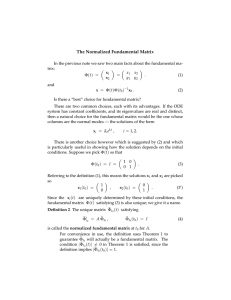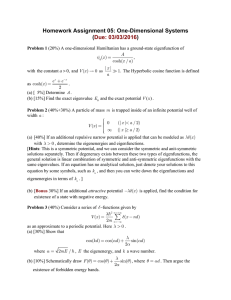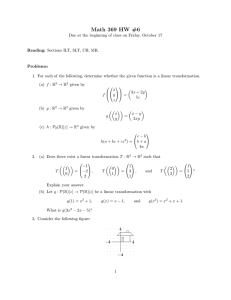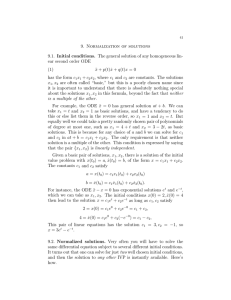Physics 480 Midterm Exam Fall 2004
advertisement
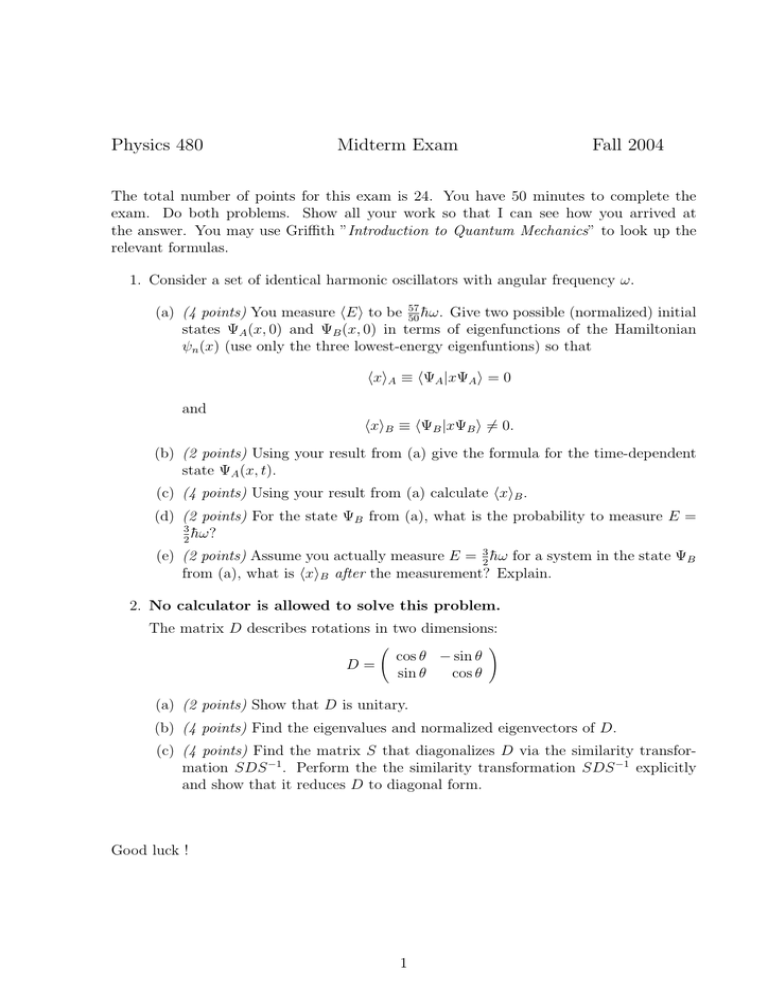
Physics 480 Midterm Exam Fall 2004 The total number of points for this exam is 24. You have 50 minutes to complete the exam. Do both problems. Show all your work so that I can see how you arrived at the answer. You may use Griffith ”Introduction to Quantum Mechanics” to look up the relevant formulas. 1. Consider a set of identical harmonic oscillators with angular frequency ω. (a) (4 points) You measure hEi to be 57 h̄ω. Give two possible (normalized) initial 50 states ΨA (x, 0) and ΨB (x, 0) in terms of eigenfunctions of the Hamiltonian ψn (x) (use only the three lowest-energy eigenfuntions) so that hxiA ≡ hΨA |xΨA i = 0 and hxiB ≡ hΨB |xΨB i 6= 0. (b) (2 points) Using your result from (a) give the formula for the time-dependent state ΨA (x, t). (c) (4 points) Using your result from (a) calculate hxiB . (d) (2 points) For the state ΨB from (a), what is the probability to measure E = 3 h̄ω? 2 (e) (2 points) Assume you actually measure E = 32 h̄ω for a system in the state ΨB from (a), what is hxiB after the measurement? Explain. 2. No calculator is allowed to solve this problem. The matrix D describes rotations in two dimensions: Ã D= cos θ − sin θ sin θ cos θ ! (a) (2 points) Show that D is unitary. (b) (4 points) Find the eigenvalues and normalized eigenvectors of D. (c) (4 points) Find the matrix S that diagonalizes D via the similarity transformation SDS −1 . Perform the the similarity transformation SDS −1 explicitly and show that it reduces D to diagonal form. Good luck ! 1







